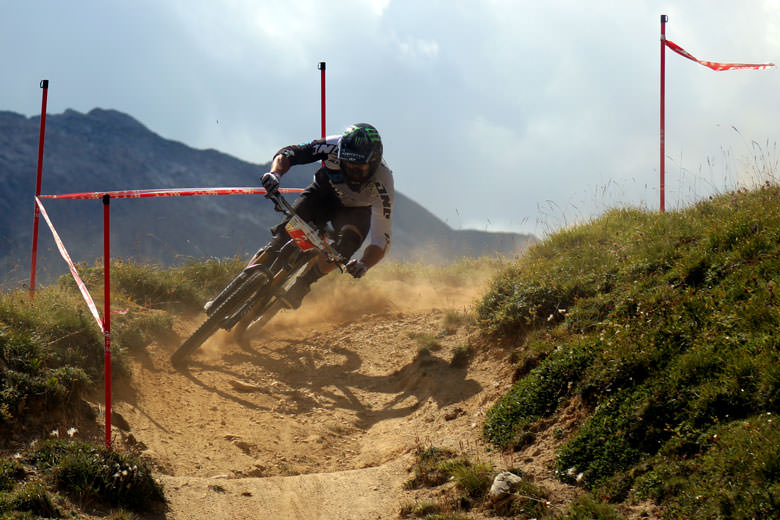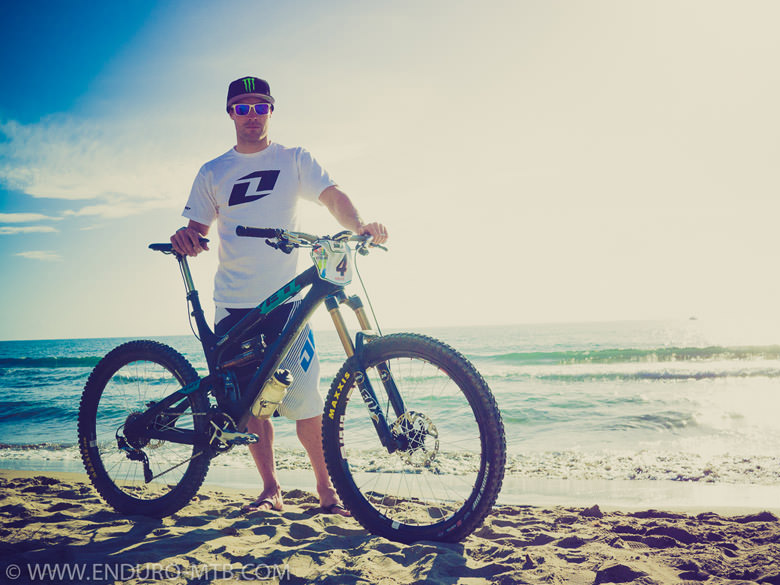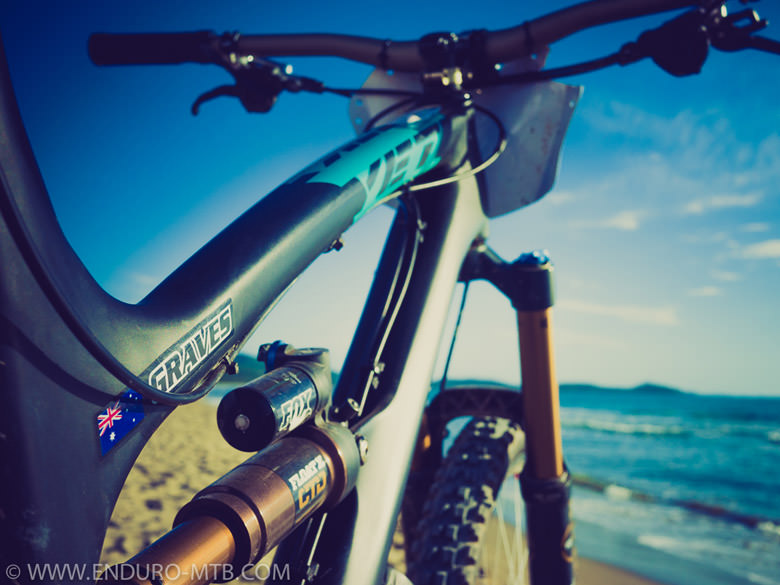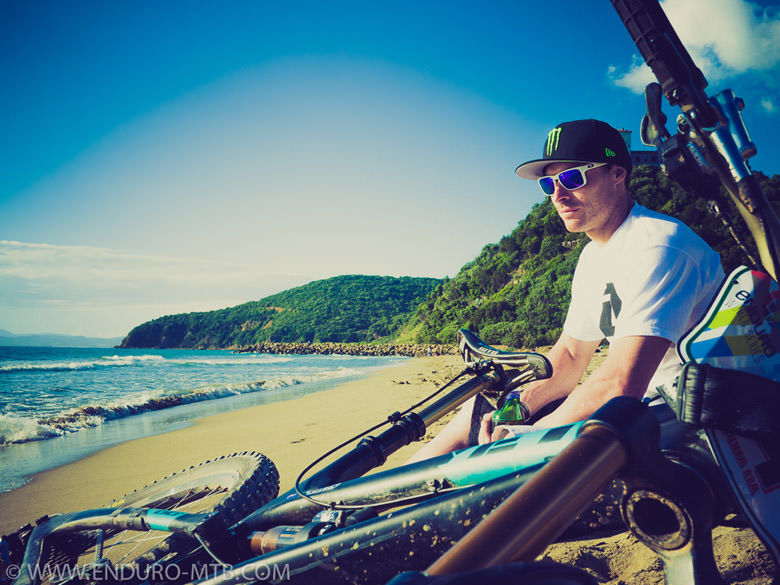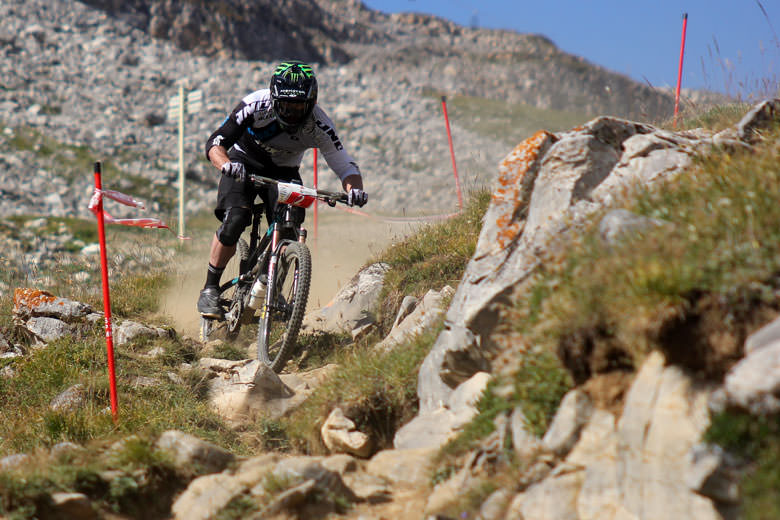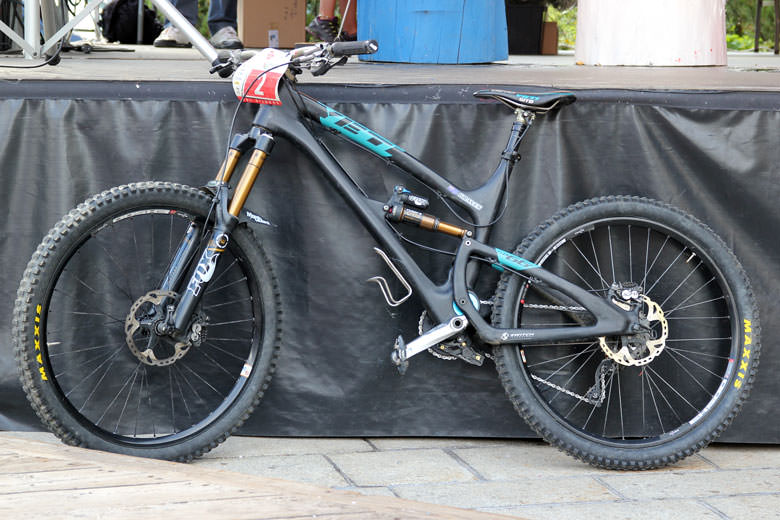Welcome to Part 2 of our exciting new weekly feature, Dialled Rides, where we expose the mysteries of bike setup and reveal secrets from those at the pinnacle of the sport!! If you missed part 1 where we talked with the current Enduro World Series Champion, Jerome Clementz, you can find it here.
This weeks resident expert is none other than the powerhouse Jared Graves. The 30 year old Australian needs little introduction having totally dominated the UCI 4X championships and 4x World Cups for many years, certainly the most successful and feared 4x rider of all time! Testament to his skill and power he took 3rd place at this years Downhill World Champions in Pietermaritzburg, astounding as he was racing his enduro bike! His Yeti SB66 proved its worth on the pedally but tough track, embarrassing full-on downhill rigs and serving as a spanner-in-the-works in the raging wheel size debate! Jared took some time out to speak to us about his Yeti and how he sets it up for maximum performance.
Enduro: Hey Jared, great season for you so far! What have been your high points?
Well 2 main high points, Definitely Whistler, I didn’t feel like the terrain played to my strengths, but I raced smart and rode solid all day! I made the most of the final stage which suited my strengths more and of course took my first win, and the $10k first place prize didn’t hurt either. The first round in Punta Ala also stands out, I was there all by myself, no help at all, had no one to drive shuttles for me so didn’t get much practice in. I knew I had prepared well, but it was really my first ever serious enduro race and I had no idea how I was going to go, I ended up 3rd! To know I was right at the pointy end of the field when I really had no idea what I was doing was a perfect way to build confidence that carried on through the rest of the year.
Enduro: Describe your riding style in 3 words?
Smooth, efficient, aggressive (when needed)
Enduro: How do you generally like your bikes to feel, plush or firm and poppy?
Definitely nice and stiff, firm is fast!
Enduro: What shock and fork are you running at the moment on your EWS race bike?
The rear shock is the new Fox floatX and the forks are 2014 Fox 34 float.
Enduro: How do you find the suspension action on the SB66, it’s quite unique with the rotating pivot?
Honestly I love everything about that bike, but the way the bike works it definitely needs to be ridden fairly aggressively to get the most out of it! If you just cruise along too much it can feel quite harsh, but that’s a good thing because it makes you want to go fast all the time!
Enduro: Have you had the shock custom tuned and if so what were you looking for in performance improvements?
Just a couple very minor changes from stock, just playing with extra oil volume to allow me to run a little less air front and rear, improving small bump sensitivity and maintaining bottom out resistance.
Enduro: How do you generally like your suspension set up (rebound, firm, plush, balanced front and back etc)?
Stiff and slow rebound, front and rear. My suspension is always stiffer and slower rebounding than most people would run.
Enduro: Do you tend to tweak your suspension to different events or try and run with the same base setting?
Always start with the base setting, 90psi in the fork and 175psi in the shock (Jared is 79kg), and maybe go up of down a little bit in pressure from there to suit a particular course. But with Enduro you kind of have to just run a base setting, something that will work well on everything, because every stage is different it’s impossible to have your bike setup perfectly for every stage! You just have to find some settings you like and run with it.
Enduro: Do you go in for changing compression settings to suit stages or as you ride, or just set initially then ride?
Well with the Fox CTD stuff there are no compression settings to change, just the 3 different modes (climb, trail and descend) this takes a lot of guess work out and I find the settings pretty good for their intended purposes. In liaison stages I’ll put everything in climb mode and then in the timed stages I’ll race either on trail mode if the trail is smoother, or descend mode when it gets rougher. Very simple really!
Enduro: What about gearing, are you on 1×10 or 1×11 and what size chain rings do you run normally?
1×10 for me….. Chainring size depends on the course, since the timed stages are what’s important, I’ll base what chainring size to use around what I’ll need for the timed race stages. It’s no good running a 32t chainring up front, that might help you climbing in the liaison stages, when you’ll be spun out everywhere during the timed stages in need of a bigger gear and lose bulk time. So my chainring is almost always 36t or 38t. Shimano only make up to a 36t cassette out back, so that’s what I run.
Enduro: Can you tell us a little more about the tyres you are running at the moment?
90% of the time this year in the EWS rounds I was on completely stock Maxxis Minion F 2.5 EXO sidewall, with Maxx Terra compound. It’s not the fastest rolling tyre, but grips like a DH tyre, and I haven’t flatted once all year so far! Occasionally I run the 2.3 minion DHR2 in the back, and occasionally I run a 2.35 Ikon out back if faster rolling characteristics are beneficial like at Winter park.
Enduro: Do you try and run the same pressures for consistency or do you alter the tyre pressures to suit stages?
Base tyre pressure settings are 27psi front and 30 psi rear! For me that has always been the pressure combination I find to give me the best balance between fast rolling and good tyre stability, sometimes I might go up or down a PSI or 2 depending on the course.
Enduro: Do you go in for angle sets to mod the geo or are you running a stock setup?
My bike is honestly 100% stock, apart from the very minor suspension tweaks from Fox, you can buy an exact replica of my bike, If your bike has the right geometry from the start you won’t have any need for angle sets or anything like that.
Enduro: What’s your current thinking on wheel size? Have you been working much with 650b and have you found any significant benefits for your style of riding?
I’ve been trying some 650b prototype stuff, I really like it, but it’s not a game changer like people say! I do think it’s probably a bit faster for the majority of trails (but definitely not all) but it’s not going to completely transform your riding! The wheel size debate is blown so far out of proportion it’s not funny. A good rider will be able to ride any wheel size fast. At the end of the day it comes down to what you enjoy, and that’s all it should be about. Some people like how a 29er smoothes a trail out and gives a more forgiving ride, other people love how they can throw a 26 around, and love how it makes you really work the trail to maintain your speed. I think 26 inch wheels make better/more skilled riders, and are more fun! All have their positive and negative points; it should be all about personal preference and how you like to ride, and nothing more. People arguing about what’s better is pointless, everyone likes different things.
Enduro: How do you manage hydration on race day – not carrying a pack? (how far will you ride without carrying spare water)
Yeah it’s really important, I’ll only not carry a pack if it’s a race that allows us to come back by the pits frequently. That’s why I always have a water bottle cage on my bike, so you can stay hydrated at all times. The water bottle cage on the bike is super ugly, some people make fun of that, but if you are smart and have done your homework you will know how much athletic performance drops off with dehydration. Function over form and all that good stuff. There are water stops at the EWS races, so running out isn’t an issue, and I’d rather have too much water than not enough!
Enduro: What do you carry with you on race day?
I always try to have every spare that is easy to carry that could break, and every tool for that job, however some things are just too much to take with you. My pack consists of
Parts: Derailleur hanger, gear cable, and sometimes a spare derailleur itself, a removable chain link, tube, and patch kit should I flat that tube, and a few spare spokes and nipples. Pretty much anything else can be fixed or bent back into place, or too big to possibly be able to carry a spare.
Tools: Allen keys of all sizes through to 8mm, spoke key, C02’s, tire levers, chain tool, small roll of gorilla tape, zip ties, small bottle of chain lube, goggle cleaning cloth.
It’s a bit more than most people carry, but to finish first, first you must finish!
Enduro: Great advice Jared! Best of luck with the grand final in Finale!
Next week – The Dudes Of Hazzard!!
Article: Trev Worsey
Did you enjoy this article? If so, we would be stoked if you decide to support us with a monthly contribution. By becoming a supporter of ENDURO, you will help secure a sustainable future for high-quality mountain bike journalism. Click here to learn more.



